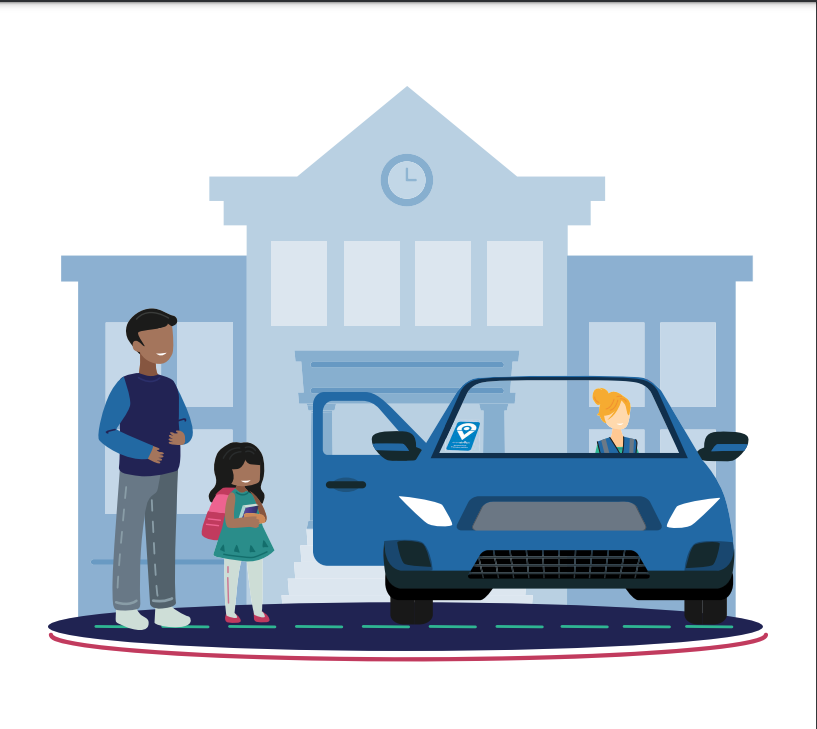Bus driver shortages have made it harder for schools to transport students, but alternative student transportation in small-capacity vehicles can offer a more flexible and cost-effective supplemental solution. Such transportation is often available as needed, but it also can be a valuable piece of your regular program.
What is alternative transportation used for?
School districts are using lower-capacity vehicles with companies like EverDriven for students who:
- Have special needs.
- Are experiencing homelessness.
- Are in early childhood education programs.
- Are medically fragile.
- Live in rural or out-of-district areas.
- Attend specialty programs, such as adult transition or after-school care.
- Are participating in extended school year programs, such as summer school.
Alternative transportation options are customizable to meet the specific needs of students with special needs. For instance, some vehicles can be equipped for wheelchairs or with sensory features to create a calming environment for students with autism. Smaller vehicles can work for students whose individualized education plans require them to ride alone to and from school.
Students covered by the McKinney-Vento Homeless Assistance Act are frequently in transition, which can make for challenging bus routing and schedule changes, creating inconsistency and sowing confusion for families. Alternative transportation provides flexible options that can be adjusted as the student moves from one location to another. This helps increase the student’s attendance and chances of graduating with their peers, and the predictability makes them feel more grounded and secure.
Students in early childhood education may still require car seats or seat belts not available on school buses. Also, if only a couple of students need transportation to a school for the deaf or blind that’s a distance away, a small-capacity vehicle allows the district to only pay for the trip and not for the other miles traveled in each direction.
Ensuring the safest ride
Not all states have the same regulations for alternative transportation, so it’s best to ensure your district’s requirements mirror, when possible, the ones for your school buses and drivers. This would include the basics, such as working lights, windshield wipers and safety inspections, as well as driver education for any special equipment, plus driving background checks and drug testing.
For added safety and peace of mind, some supplemental transportation companies may provide GPS tracking to districts and parents, route optimization, and trip updates at the student level (not just the vehicle or bus level). The student’s driver may also have access to only the necessary encrypted information about the student’s unique needs during the trip. This can make the experience more personalized, while also providing a sense of familiarity and trust.
How to start using small-capacity vehicles
Some school districts choose to keep alternative student transportation in-house, but many districts choose to outsource it instead.
In-house options are ideal for districts that can:
- Purchase vehicles.
- Hire drivers.
- Pay for additional overhead to satisfy driver benefits and vehicle maintenance.
- Develop their own processes and procedures.
- Invest in routing, monitoring, and tracking technology.
- Maintain schedules, driver benefits, routing, dispatch, etc.
- Coordinate communication with parents and providers.
Outsourcing alternative supplemental transportation is a solution for districts that:
- Need scalable or seasonal transportation as students’ needs ebb and flow.
- Have budgetary concerns with fulfilling alternative transportation in-house.
- Want to provide parents with trip transparency.
- Suffer from bus driver shortages.
- Lack enough staff for routing, optimization, or dispatch.
If outsourcing, you’ll generally start with a request for proposal. Nearby school districts that have alternative student transportation may have an RFP you can use. Purchasing co-ops are another option.
Not all transportation providers are the same. Many excel at customer service or safety while others offer less expensive solutions. When evaluating RFPs, look at each company’s safety requirements for drivers and vehicles, contractor requirements (such as insurance and technology), scalability, and pricing model.
How companies calculate prices
Pricing models vary across alternative transportation providers, but most bill per trip rather than per student. If so, districts should require route optimization to avoid paying for trips that could be combined. Some of the line items districts may see in an alternative transportation bid include:
- Trip fee.
- Additional miles.
- Cancellations.
- Equipment needed (wheelchairs, oxygen, car seats, safety vests — usually charged per student rather than per trip).
- Monitors (which could be provided by the district or the company).
- Wait time.
- Contract minimums (which lessens flexibility for districts).
Alternative student transportation enables school districts to provide equal access to education to all of their students and presents a personalized transportation experience to their most vulnerable student populations. Good state regulations and diligent school districts can help ensure that alternative transportation options are safe. Alternative transportation companies’ flexibility allows districts to supplement their existing transportation program with a solution that works for everyone.
Opinions expressed by SmartBrief contributors are their own.
